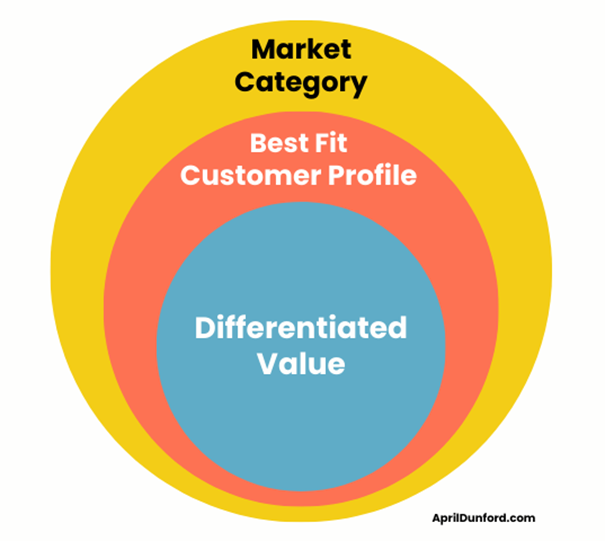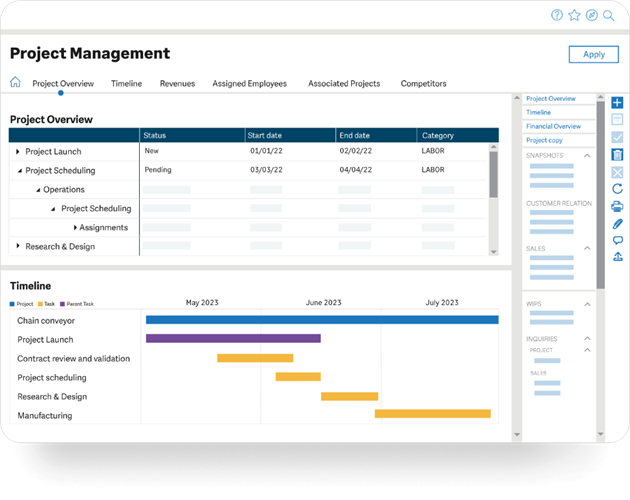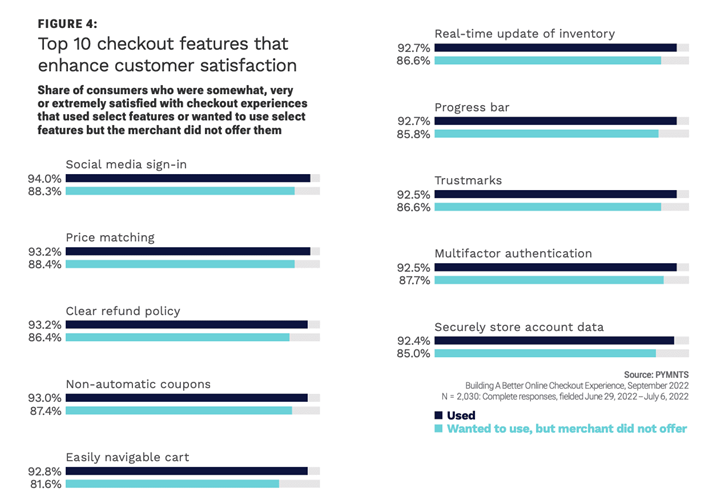8 Product Launch Strategies to Standout in the Market

In this article
Product launch strategies are your chance to show potential customers why you’re so excited about entering the market—and, crucially, why they should be too!
You can do much better than simply listing new products on your website or stacking them in-store. That approach won’t generate any hype. It’s essentially a passive form of marketing.
If you want to create some real buzz, you need an active marketing campaign that engages your target audience. A well-crafted product launch strategy should deliver the right product at the right price, exactly when customers want it—AKA targeted marketing. Knowing who, what, and when to target isn’t always obvious, so you really need to put yourself in your customer’s shoes and lean on the right tools to accomplish this.
The second step is to actually motivate your customers to buy your product. Typically, this means using creative storytelling. You want to highlight your product’s features and unique value proposition (UVP) without sounding too salesy. It’s a tough line to walk, but it’s certainly achievable, no matter your industry.
So, let’s get into it. On this page, you’ll find nine effective strategies that brands can use for an impactful product launch. We’ll explain why these marketing plans work, our top tips for the process, and how you can avoid common pitfalls if you decide to use them.

The importance of standing out in a competitive market
Often, it’s not the products with the highest-quality materials, groundbreaking new features, or best value for money that are the biggest sellers. The products with the most engaging and targeted campaigns appeal the most to consumers. There’s a reason why brands are spending $667 billion on digital advertising in 2024!
So, what does it take to truly stand out in a competitive market? Generally speaking, you want to position your product to be remembered as such through your marketing efforts:
- Desirable: Your product should evoke a sense of FOMO, as if it’s selling like hotcakes and you’re almost running out. Done right, this creates excitement and makes your customers rush to buy.
- Unique: Your product should offer something new or solve problems in ways that no one else has. Otherwise, what makes it so special compared to the brand that customers already know? This is exactly where Microsoft’s Zune failed to break through because it didn’t offer any significant features that Apple’s existing iPod didn’t have.
- Reliable: Tell people how your product can be counted on time and time again. You want customers to think of your brand as the market leader for your product, so emphasize why you made it like it is—e.g., that customers were begging for a high-quality version of [competitor product].
- Accessible: Make sure your product is conceptually easy to understand. This is especially important in the context of appealing to your target market—you may get what your product is all about, but do your customers?
- Memorable: Craft a product launch that sticks in the minds of consumers long after they see it, for example, a catchy jingle that they hum all day or a vivid social media ad that keeps showing up in their feed.
- Affordable: Finally, you need to justify why your product has the price tag it does. Compare it to competitor products and their pricing strategies because your customers certainly will! This was the main reason the $1,500 Google Glass failed—it didn’t do anything better than the smartphones of the era.
Setting the stage for a successful product launch
Ready to enter the market? Let’s cover your product launch checklist that’s bound to engage prospective customers.
Conduct market analysis and identify your target audience
Okay, so the first step is determining who will buy your product. What demographic needs it the most? Who would be most willing to part with their hard-earned cash to pay for it?
There are generally two approaches that you can take here:
- Build customer personas: The traditional method is to craft a fictional representation of your ideal customer. For instance, if you launch a budget version of an existing product, you may imagine a student would be more inclined to purchase it. Or for something such as a baby’s car seat, it’s safe to assume that a parent-oriented marketing campaign would serve to build trust.
- Conduct marketing data analysis: On the other hand, you can take a deeper look at customer data to pinpoint their behaviors and preferences. Let’s say a brand has collected feedback and identified a customer segment that wants eco-friendly options—it’d make sense to target them in your next marketing campaign for a product’s launch.
The great thing about these marketing strategies is that you can capitalize on each of their strengths. Sure, you can make a broad assumption about the type of customer buying a product and then refine that persona using data-driven insights.
The only nut to crack is that it’s often tough to discern the end value that you’re getting from a product launch. How much budget should you allocate to a marketing campaign for what you’ll get out of it? To answer that question, many brands use an ERP for project management.
These applications look at all the key metrics in a project lifecycle—marketing spend, cost-per-conversion, business performance, etc. This makes it easy to understand at a glance which project launches have been the most effective and where you achieved the best value for money.

Run testing with a select group of customers before launching
Once your product soft launch is ready, it’s time to put your battle plan to the test with the help of focus groups. These are great for getting a flavor of how your product may be received without committing to a full-scale launch—and they can highlight minor tweaks that’d make a huge difference in appealing to your target demographic.
Generally, businesses conduct testing with two focus groups: the control and the target group.
The control group consists of a random selection of current customers, providing a baseline for feedback. In contrast, the target group is chosen based on the segment you believe is your main audience. If feedback from your target group is underperforming, it’s fair to say your targeted marketing strategy is off the mark.
Communicate a unique value proposition for your product
Every single one of your products needs a unique value proposition (UVP), as this is the core message of what your product launch strategies will revolve around.
While your product developers may develop several compelling ideas, the most impactful UVPs often come directly from your customers. In your focus groups, ask the question: "What is the one thing that would make you choose this product over similar options?
Doing this ensures that the UVP lives up to the expectations of your ideal customers. Plus, you can include these customer testimonials in your marketing materials to build social proof and trust.
Leverage ERP software to plan and track your launch
Throughout the product launch process, you need trustworthy data to make informed decisions; otherwise, you’re relying on guesswork. This is why so many brands use enterprise resource planning software. These apps collect and sort critical data across every aspect of your business, such as your supply chain, inventory, and CRM applications.
An ERP helps you evaluate ongoing campaigns' effectiveness by seeing if it’s generating value for your business. You can use these insights to plan upcoming launches or reallocate resources as necessary. Plus, it covers all your bases on data integrity and compliance with regulations, so it’s one less obstacle to consider in your market strategy.

Develop a pre-launch campaign to build anticipation
So, you’ve tested your product launch strategies with customers and crunched all the numbers—now it’s time to kick off your marketing efforts with a captivating pre-launch campaign.
Remember that list of objectives we covered for project positioning: desirable, memorable, unique, and so on? That’s the vibe you’re going for here. Create teaser content, sneak peeks, and exclusive previews that match your brand image, which will surely generate excitement.
Use multi-sales channel strategies for maximum impact
Next, you can maximize your product's visibility with a multi-channel sales strategy.
Your target customers should see your product everywhere they go online because the more they see it, the more intrigued they’ll become. Try a few different marketing channels, such as email campaigns, social media posts, or viral content marketing on creator platforms.
For example, many brands partner with TikTok influencers to show off a product’s features in a fun and interactive way. And remember, you can integrate the data from all of these channels with your ERP.
Develop a frictionless customer journey on launch day
On official launch day, it may sound obvious, but you need to make it as easy as possible for your customers to a) find the product page and b) purchase the product.
A practical hack for visibility is to put a shortcut link on your website’s homepage titled ‘New arrivals’. That means fewer clicks for incoming web traffic to find the specific product page.
Another top tip is to make your checkout smooth with features such as auto-fill and support for multiple payment providers. Even a basic visual reminder like a progress bar is desired by over 85% of customers. Finally, follow up with email confirmation and quick links for customer service, product returns, tracking, etc.

Distribute promotional giveaways for brand recognition
The only thing better than a great product is a great product that’s free—so promotional giveaways are really effective at catching customer attention. The best way to do this is to host a social media contest and get potential customers to share the post to enter. These product launch events spread your message far and wide, and they’re super transparent because everything is out in the open.
Continue to engage with your audience post-launch
The customer journey doesn’t end with their purchase. In fact, the conversion rate is much higher among your existing real customers since they’re already familiar with your products—as opposed to convincing someone who’s never heard of your brand before. So, it’s in your best interest to build customer loyalty and hold onto them.
You should start by keeping your customer base in the know about upcoming product launches. The easiest way to do this is by emailing newsletters about new releases. Or, you can take a slightly more targeted approach that sends product recommendations based on purchase history, i.e., “You previously bought something in this range, and our new product would match it really well!”

Final thoughts
If there’s one thing you take away from this page, it’s that product launch strategies are absolutely essential for it to reach a large audience and sell well.
Remember that each process step—from pre-launch analysis to continuous post-launch engagement—plays a pivotal role in your product's success. So, regardless of the type of product launch you go for, it’s crucial that you make it all about the customer. Keep them engaged, listen to customer feedback, and build up your email lists to inform your audience about exciting news.


.png)
.jpeg)
.png)

